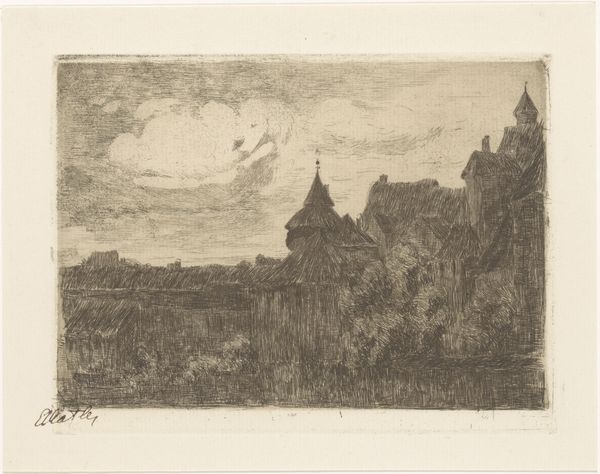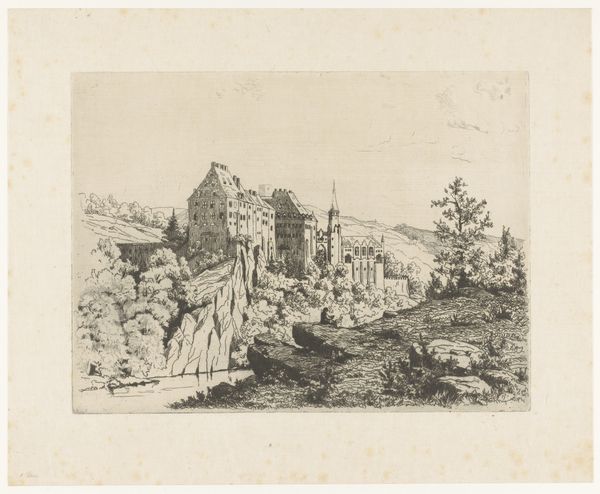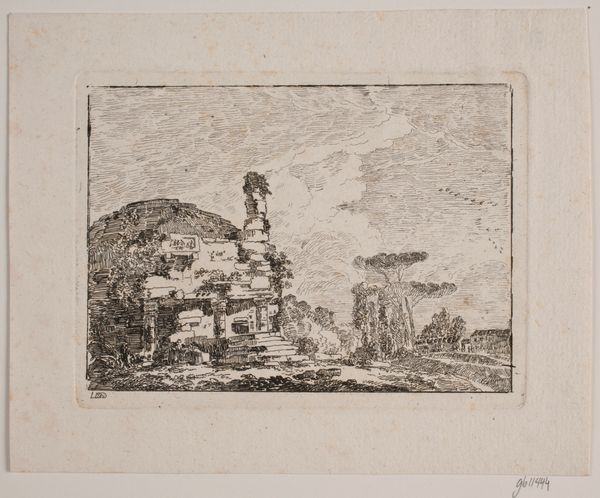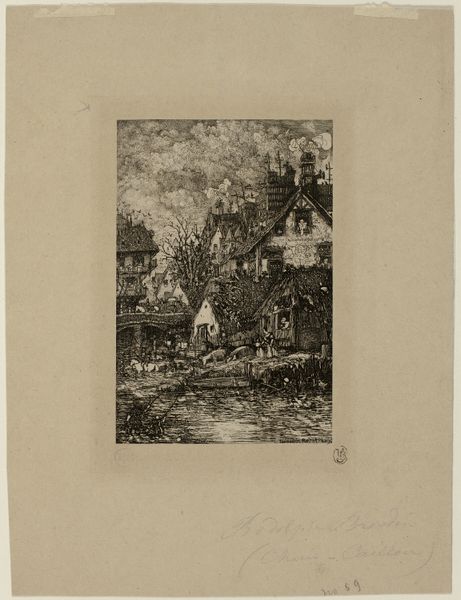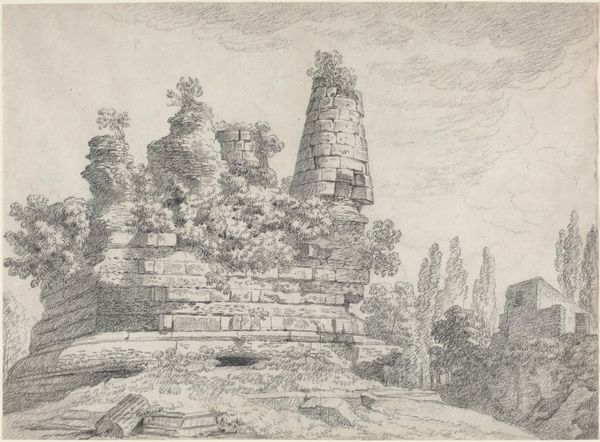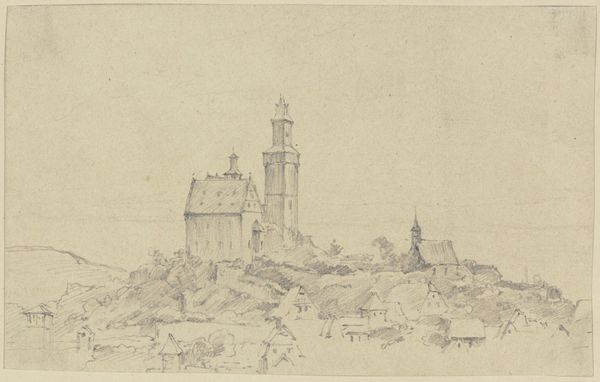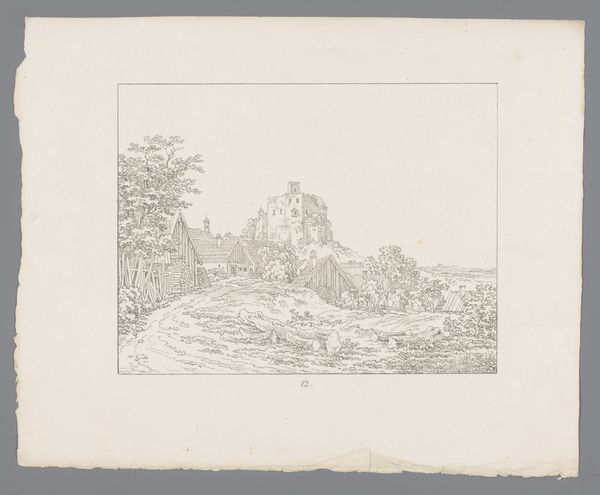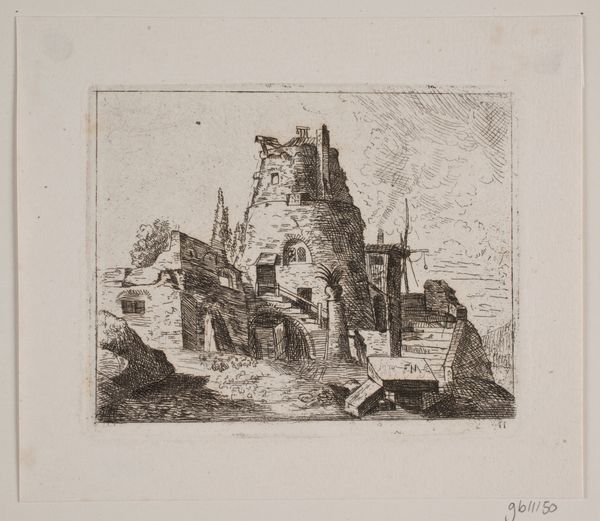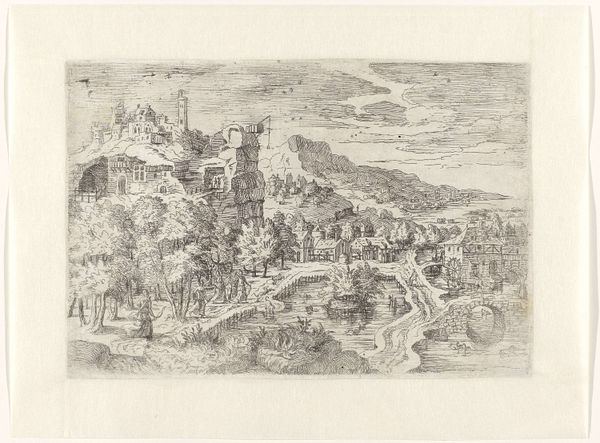
print, etching
#
toned paper
#
ink painting
# print
#
etching
#
landscape
#
etching
#
geometric
#
line
#
history-painting
#
realism
Dimensions: 102 mm (height) x 140 mm (width) (plademaal)
Curator: Looking at Jens Petersen Lund's "En pyramide," an etching from 1764, the texture is quite striking for such a delicate medium. What catches your eye first? Editor: Definitely the contrast! The crisp geometry of the pyramid is set against this almost chaotic landscape. It gives the impression of a very controlled artifice inserted into a wilder, perhaps more "natural," world. What was the context around its making? Curator: Etchings like these, especially landscapes, were very popular for distribution and study. We should consider the rise of the printmaking industry as impacting the accessibility and value of art at the time. How were they using labor? What materials did they import for printing? These things dictate both cost and availability. Editor: Absolutely. And beyond the logistics, what does this image of a pyramid signify? The pyramid itself represents so many layers of meaning—from the power structures of ancient civilizations to more contemporary colonial fascinations with "exotic" cultures. The question becomes, what were European artists trying to say by depicting it in this way? Is it commentary? Appreciation? Appropriation? Curator: Or simply good business? Demand drove production. Lund likely wasn't concerned with our present-day theoretical critiques. What mattered was producing something desirable within a complex system of art patronage. What was being commissioned, bought, and sold—those are key points in understanding artworks. Editor: It is hard to know how engaged Lund was with contemporary social and political debates when creating the piece, however, the way an artist reproduces something like a pyramid is always saying something, be it intentional or not. This "something" affects both who they are now, and who we are, whether Lund considered that impact. Curator: Indeed. An image like this offers insight into the cultural economy and the technical skill valued during the Enlightenment. Its lines reflect meticulous work and speak volumes about art as labor. Editor: Ultimately, whether you look at it from the perspective of production or representation, there's no denying the cultural power radiating from this "En pyramide." Curator: It bridges high art and industry in very compelling ways.
Comments
No comments
Be the first to comment and join the conversation on the ultimate creative platform.
